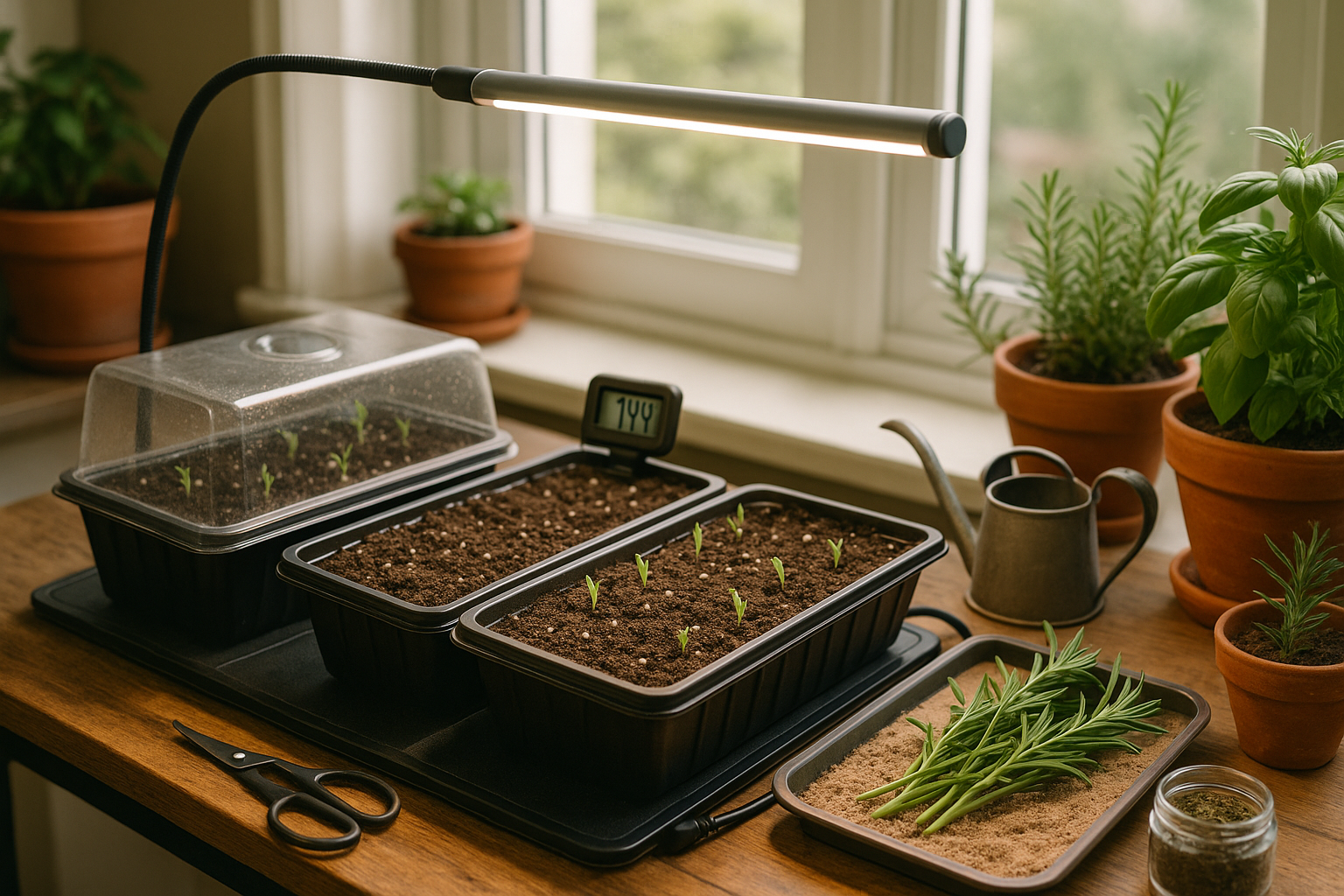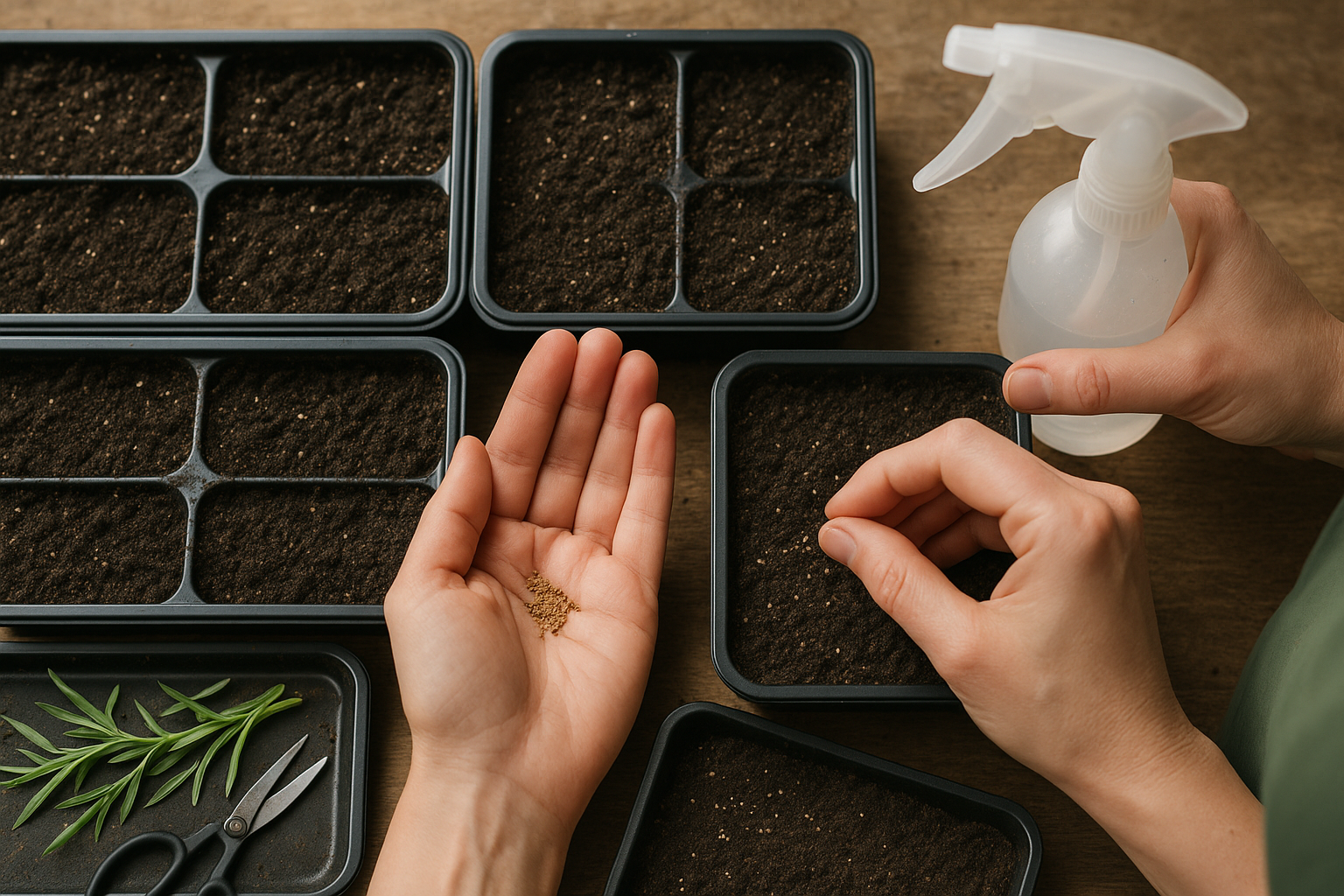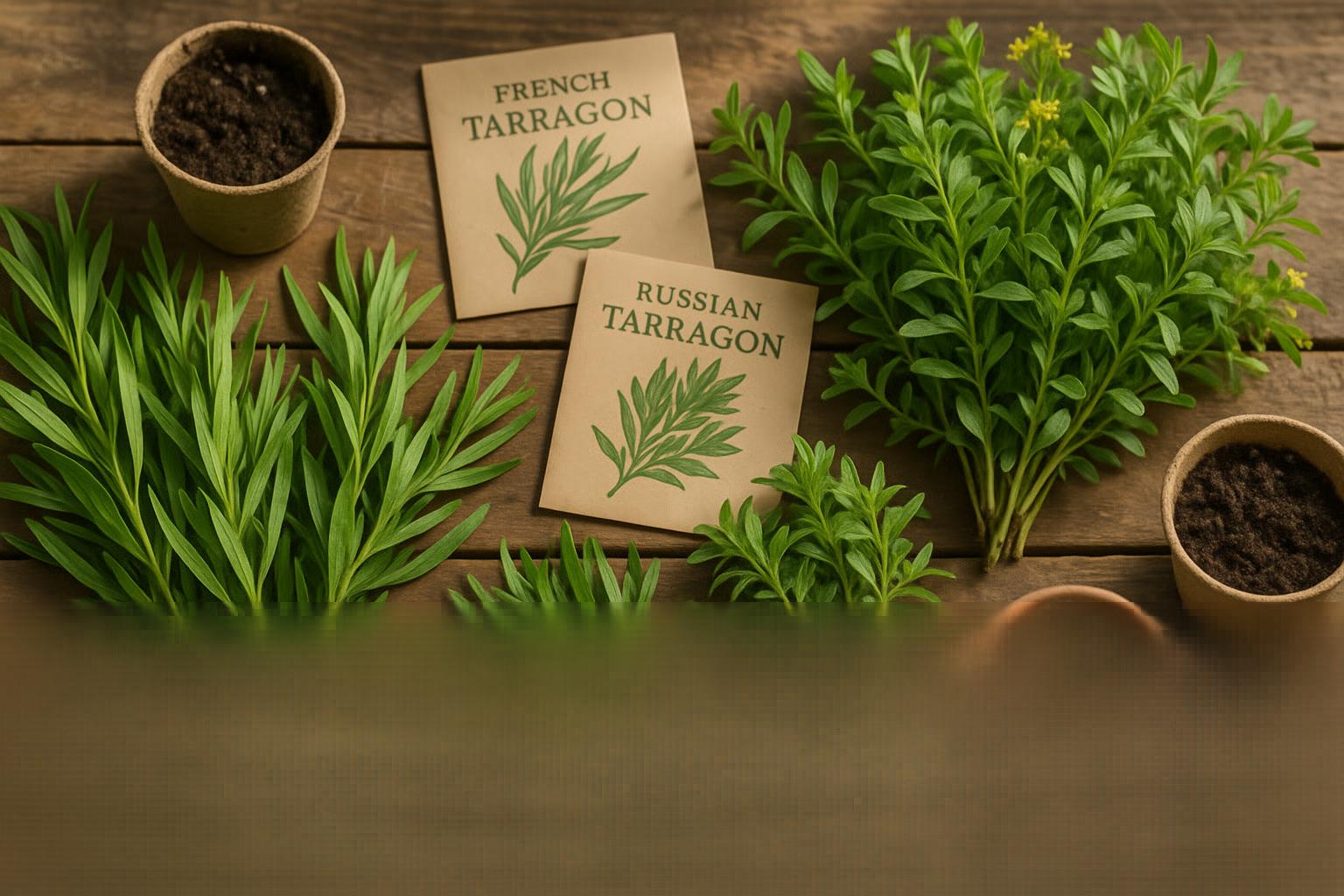Introduction
If you’ve ever wondered whether you can grow tarragon from seed, you’re not alone. Many herb lovers get confused when it comes to sprouting this fragrant favorite, often encountering conflicting advice—especially about French versus Russian tarragon. Here’s the key: while Russian tarragon seeds are generally easy to find and grow successfully, true French tarragon almost never grows from seed at all. Instead, French tarragon must be propagated by cuttings or divisions, as its seeds are sterile. This difference leaves many gardeners scratching their heads at the garden center or wondering why their “French” seedlings lack that signature aroma.
So, should you pick up that packet of seeds? If you’re after the classic culinary flavor found in French tarragon, seeds won’t do the trick. But for beginners looking for a hardier herb with mild flavor, Russian tarragon from seed is a great place to start. In this guide, we’ll clear up which tarragon to plant, walk you through how to successfully grow tarragon from seed—from soil prep to watering routines—and share practical harvesting tips so you can enjoy fresh tarragon from your own garden. Whether you’re growing for the first time or fine-tuning your herb patch, let’s dig in and make sense of tarragon!
Choosing the Right Tarragon Variety
When selecting tarragon for your garden or kitchen, it’s important to know that not all varieties are created equal—especially when it comes to growing from seed. French tarragon is prized for its delicate, anise-like flavor, but it’s almost always sterile and rarely produces viable seeds, making it difficult to grow from seed packets.
Instead, French tarragon is best propagated from cuttings or divisions. So, if you see “French tarragon seeds” for sale, they are likely mislabeled or actually Russian tarragon.
Russian tarragon, on the other hand, grows easily from seed and is much hardier, but it lacks the refined flavor of French varieties and often tastes dull or bitter. Mexican tarragon, sometimes called Mexican mint marigold, is unrelated but offers a similar licorice aroma and grows readily from seed, thriving in warmer climates.
To ensure you’re buying the correct type, only purchase tarragon seeds or plants from reputable nurseries, and double-check labels for the scientific names:
- Artemisia dracunculus for French and Russian types
- Tagetes lucida for Mexican tarragon
When in doubt, ask the supplier for details. If you’re seeking French tarragon, look for established plants rather than seeds to avoid disappointment and culinary surprises.
Preparing to Grow Tarragon from Seed

Before you start growing tarragon from seed, set yourself up for success by preparing the right environment. Use a lightweight, well-draining seed-starting mix—avoid heavy garden soil, which can stunt delicate seedlings. Fill small trays or pots and moisten the soil gently. Choose containers with drainage holes to prevent soggy roots.
For the best results, pick a spot that receives bright, indirect light—south-facing windows are ideal. If sunlight is limited, a simple LED grow light can provide the needed boost. Start seeds indoors about 6–8 weeks before your region’s last expected frost date; mid- to late winter is typical for most gardeners.
Tarragon seeds germinate best in warm conditions, so keep the soil between 65–70°F (18–21°C). If your home runs cool, a seedling heat mat can make a big difference in sprouting rates. Remember, tarragon likes gentle light: seedlings often grow leggy without enough illumination, so place grow lights about 2–4 inches above the trays and run them for 14–16 hours daily.
By creating the right setting from the start, you’ll give your tarragon the strong foundation it needs to thrive.
Step-by-Step

Sowing tarragon seeds starts with using a fine seed-starting mix in shallow seed trays or small pots. Plant the seeds just barely under the soil surface, about 1/8 inch deep, and space them about an inch apart to allow for airflow and healthy root development.
Keep the soil consistently moist but not waterlogged by misting gently with a spray bottle. A plastic dome or clear bag over the tray can help maintain the right humidity. Tarragon seeds are tiny and may take up to 14–21 days to germinate, so don’t worry if there’s no action at first; just keep them warm, ideally around 70°F.
Watch for mold or soggy spots, which are signs of too much moisture. If that happens, remove the cover briefly to let things dry out. Once the seedlings develop their first set of true leaves, thin them so only the strongest remain. Then gradually acclimate them to outdoor conditions if you plan to transplant them.
Move seedlings to larger pots or into the garden after all danger of frost has passed, spacing them at least 12 inches apart. Always handle the delicate roots gently and water them in well to help them adjust to their new home.
Tips for Growing and Caring for Tarragon Plants
Tarragon thrives best in a sunny spot with well-draining soil—try placing your pots or garden beds where they get at least six hours of direct sunlight daily. When it comes to watering, keep the soil lightly moist but never soggy; let the top inch dry out before watering again to avoid root rot.
Fertilize sparingly; a light application of balanced, all-purpose fertilizer once in the spring is usually enough, as excessive nutrients can reduce the plant’s flavor. Thin seedlings to at least 12 inches apart so each plant has room to grow, and pinch back the growing tips regularly—it encourages bushier growth and prevents tarragon from becoming too leggy.
Remove any flower buds you see, as flowering can make the leaves bitter. Watch for common pests like aphids and spider mites; spraying the leaves with a gentle stream of water or using insecticidal soap can help keep pests at bay. If your tarragon develops powdery mildew or yellow spots, improve air circulation around the plants and avoid overhead watering.
With a little attention to sunlight, spacing, and routine maintenance, you’ll enjoy a healthy, fragrant tarragon harvest all season long.
Harvesting and Using Homegrown Tarragon
For the best flavor, harvest tarragon leaves in the morning just after the dew dries, ideally before the plant flowers when the essential oils are at their peak. Use sharp scissors to snip off young stems, taking only about a third of the plant at a time to allow for continuous growth.
If you plan to use tarragon right away, simply wash and pat the leaves dry before chopping them into salads, vinaigrettes, or as a finishing touch on fish and chicken dishes—its subtle anise-like flavor works wonders.
For longer storage, tarragon can be dried by hanging small bunches upside down in a cool, dark, well-ventilated spot, or by spreading leaves on a baking sheet in an oven set to low heat. Once dry, crumble the leaves and store them in airtight containers.
If you want to keep the fresh flavor, freezing is a great option: chop the leaves and pack them into ice cube trays with a bit of water or olive oil, then add the cubes directly to recipes.
No matter how you store it, freshly grown tarragon can elevate simple dishes like scrambled eggs, homemade mayonnaise, or roasted vegetables, so experiment and enjoy the unique brightness it brings to your kitchen.
